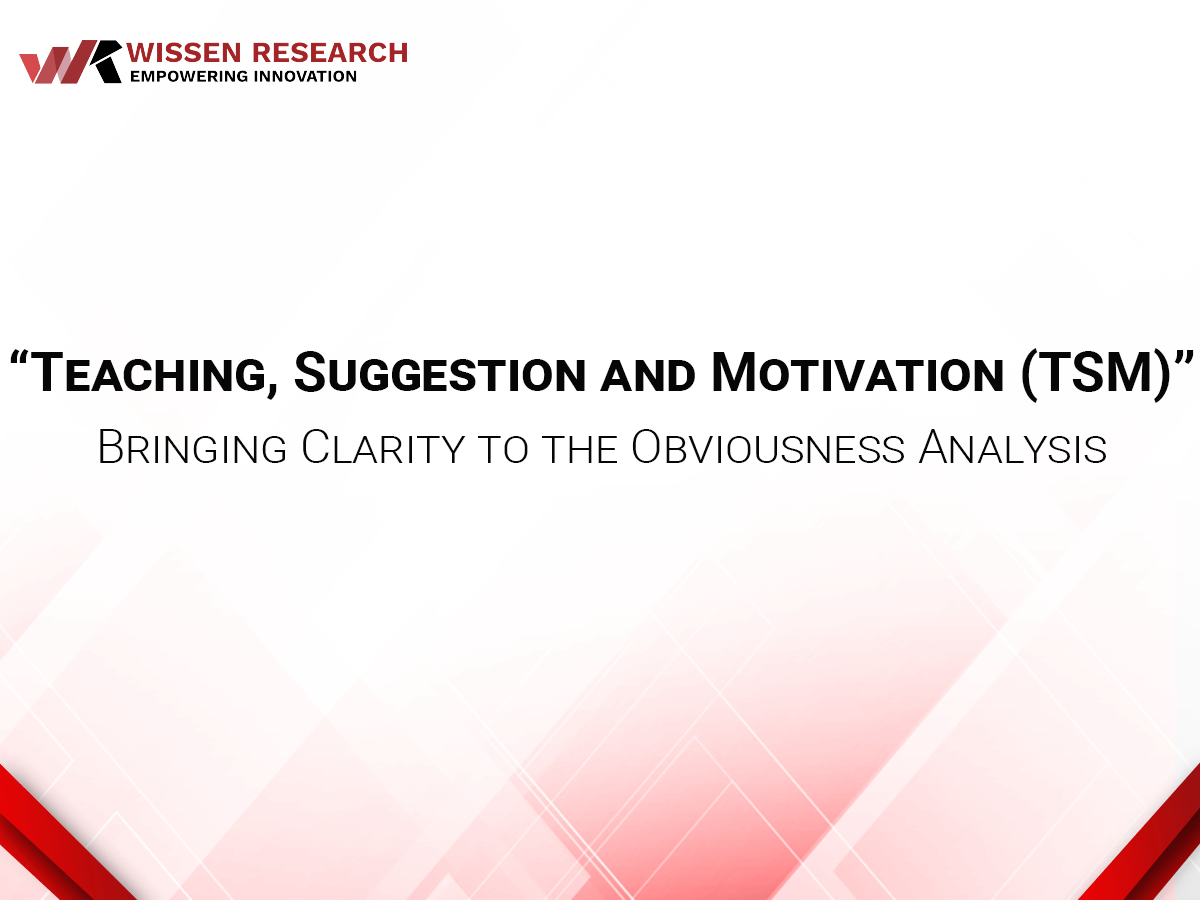
Close


The TSM stands for Teaching, Suggestion, and Motivation. According to this TSM test, “patent claim is only proved obvious if the comprehension of a person having ordinary competence in the art, the prior art or nature of the problem indicates some motivation or suggestion to combine the prior art teachings. The TSM test is one of a variety of legitimate rationales that might be used to evaluate obviousness, according to the Supreme Court. Simply, there are the following three questions that must be answered while analyzing the obviousness of an invention in comparison to previous art.

It should be obvious by now that receiving a patent for innovation requires a leap of logic. A sufficiently large “gap” beyond what is currently known can be scientifically proved.
Innovations that do not make a sufficient step (iterations beyond the first order), or, more particularly, inventions that are obvious, are not patentable, according to the courts. It is subjective to determine obviousness by judging a sufficient shift. To reduce the unpredictability of this decision, obviousness is assessed via the sight of a Person with Ordinary Skill in the Art (PHOSITA).
A person of average talent has strong cause to pursue the known choices within his or her technical grasp when there is a design need or market demand to address an issue and there is a finite number of identifiable, predictable solutions. If this results in the expected success, it is most likely the result of ordinary competence and common sense rather than innovation.
If a PHOSITA finds that the shift was inadequate to render the invention non-obvious, it is thus apparent and hence not patentable. In Winner Int’l Royalty Corp. v. Wang, the TSM test was used, stating that in order to find a patent obvious, the previous art must contain a hint or teaching to combine components revealed in the prior art.
Please Subscribe our news letter and get update.
© Copyright 2023 – Wissen Research All Rights Reserved.
Powered by VintageCoders